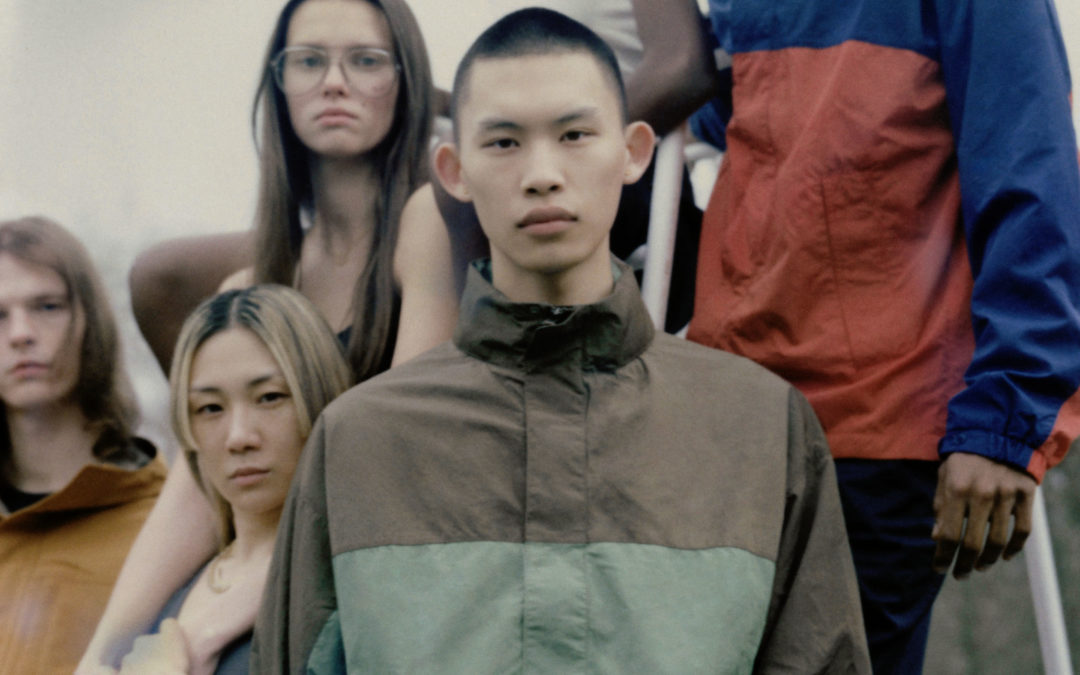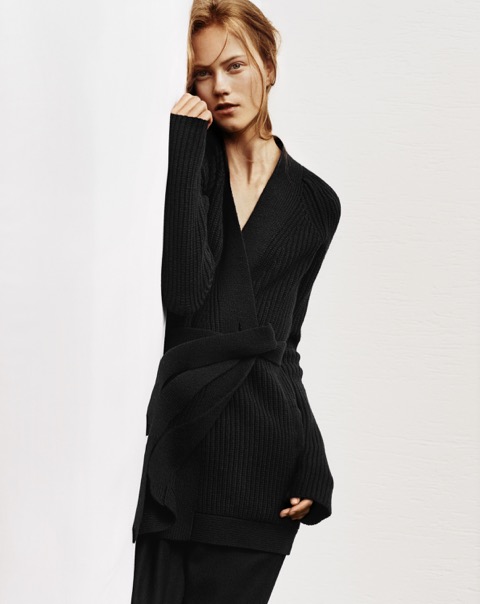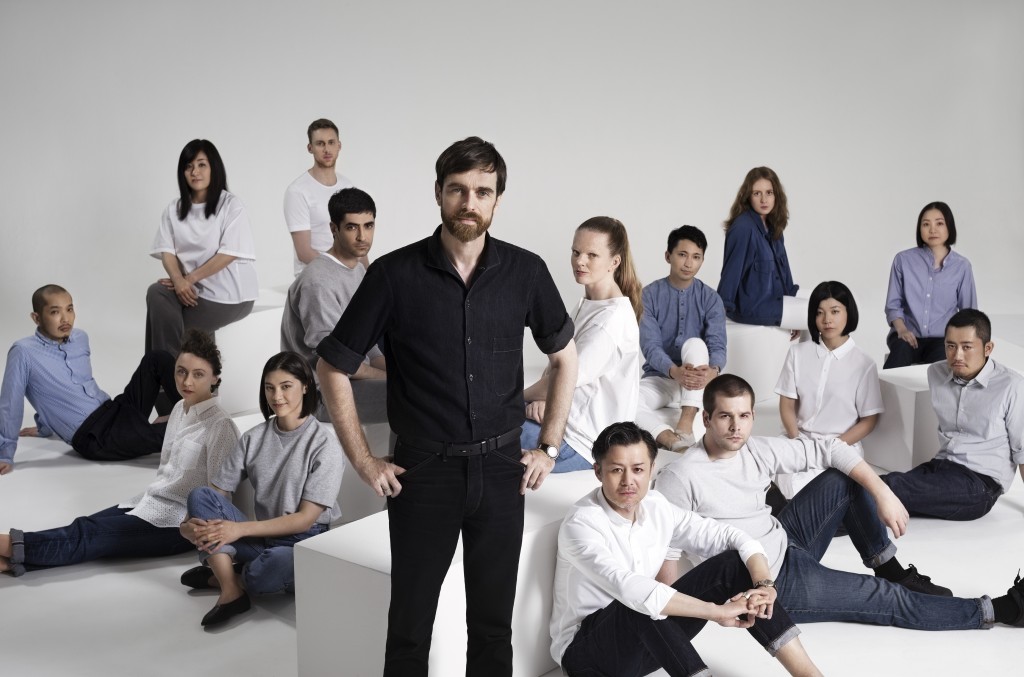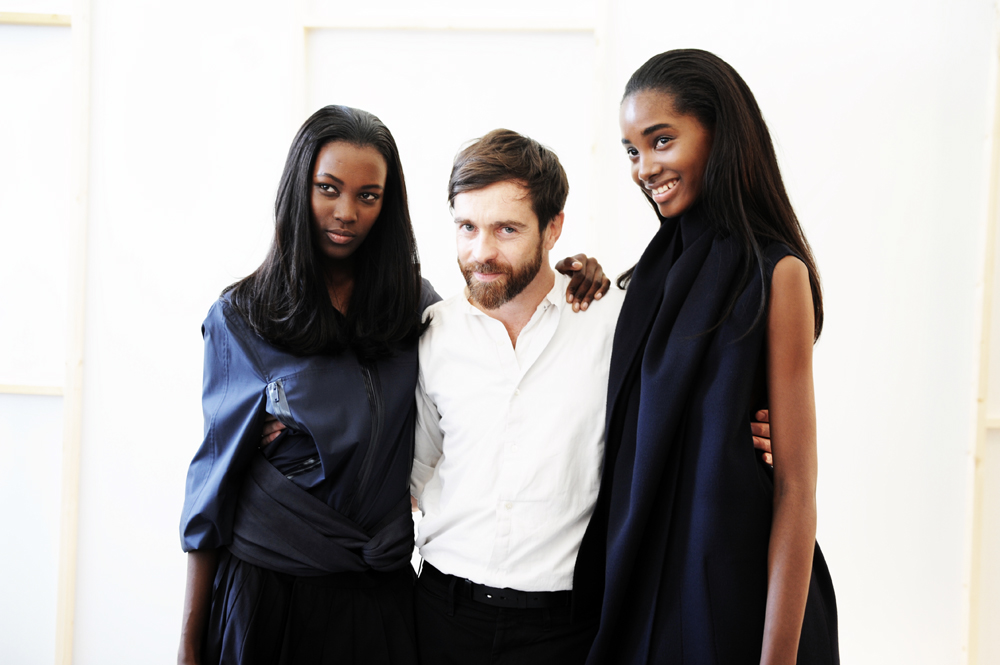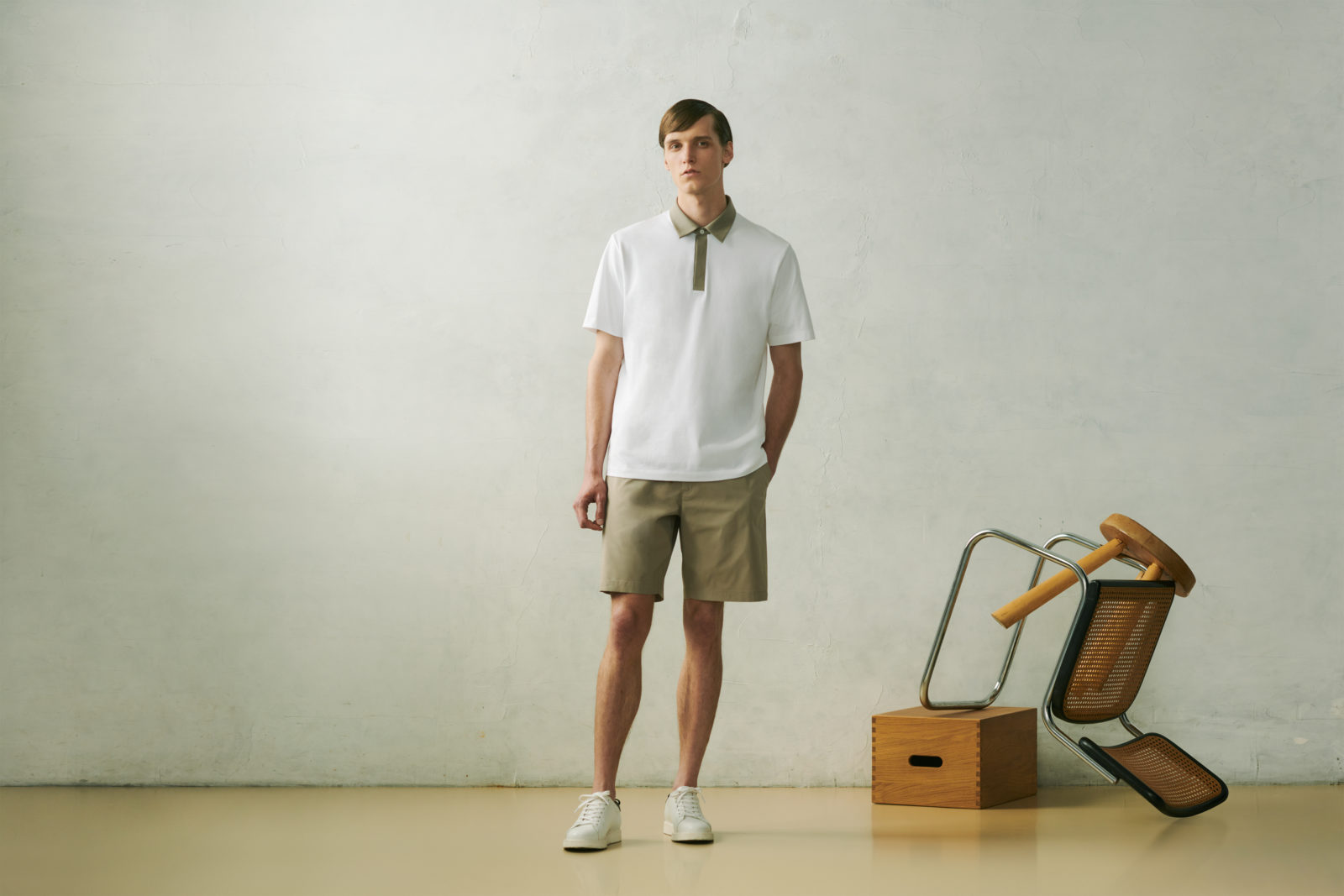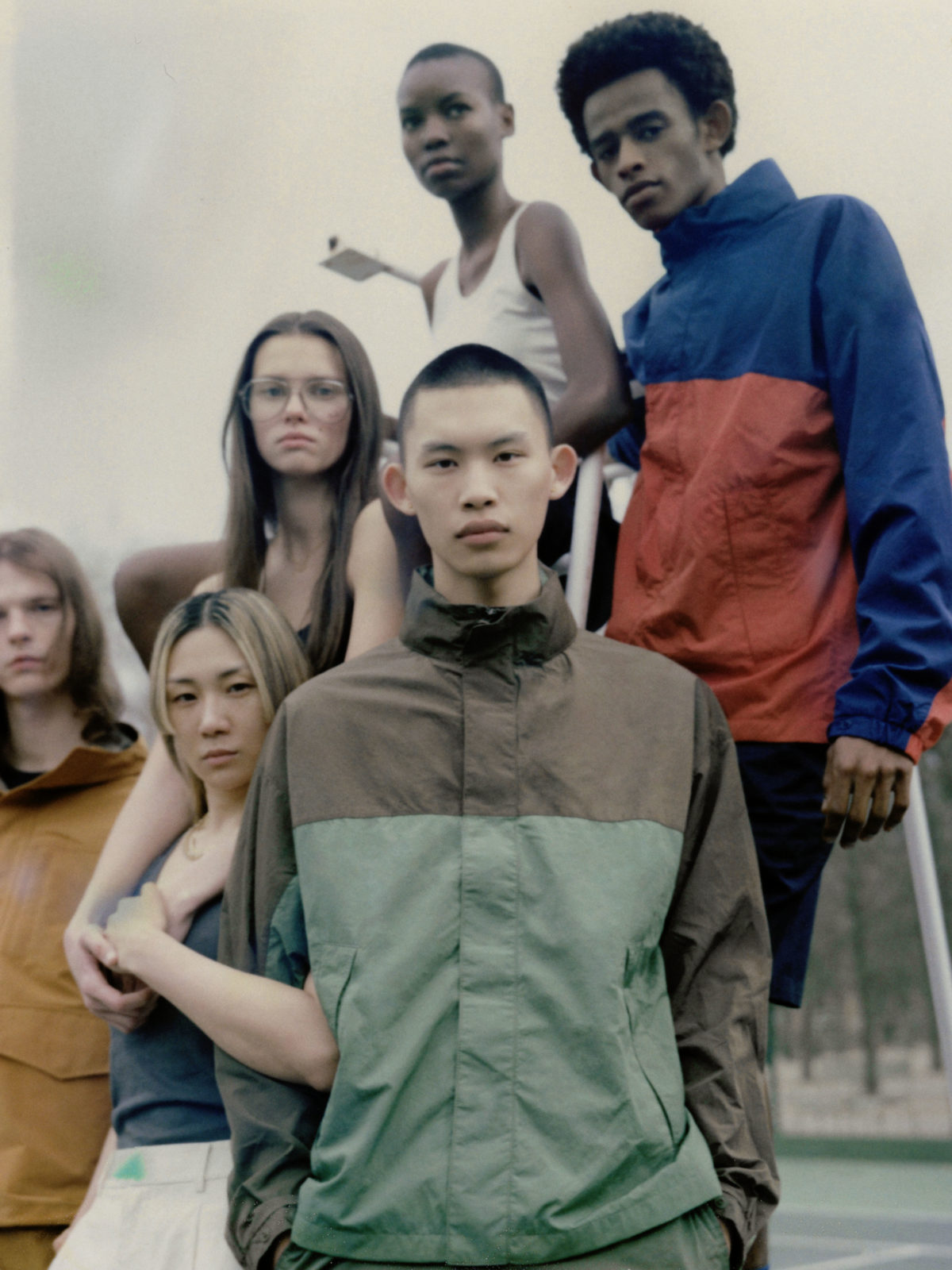
Photo by Mathieu Rainaud
A MEETING WITH TAKAHIRO KINOSHITA OF UNIQLO
By Armelle Leturcq
Takahiro Kinoshita has worked in the publishing world for over twenty-five years. Beginning his career as editor in chief of Popeye, one of Japan’s most culturally influential men’s fashion and lifestyle magazines, he also had a stint at Brutus, before most recently, launching Uniqlo’s LifeWear Magazine in 2019. It’s a publication that goes hand-in-hand with the values of the brand, creating clothing that is at once functional and practical, whilst being beautiful, inclusive and joyful. Featuring photography, interviews and articles LifeWear is a glimpse into Uniqlo’s universe, and of Kinoshita’s himself. He talked with Armelle Leturcq about the importance of the printed press in an increasingly digital world and the constant cultural interchange between Japanese and French culture.
AL: You are currently the editor in chief of Uniqlo’s in-house magazine LifeWear and you previously worked as editor in chief at iconic Japanese magazines such as Brutus and Popeye. Can you tell us a little bit about your background and how you came to be in the publishing industry?
TK: I have taken an interest in magazines and the printed press since I was a student. It might be difficult for young people today to believe, but magazines were extremely influential on me in my youth. As I graduated from university and considered my career options, I decided that I wanted to be in a position where I would be the person who would have an influence on young people. I started to work for a publishing company, and then joined the editorial department at Popeye, which is still one of the most influential publications in Japan. In a sense, it was like a kid who likes soccer being given the opportunity to play for Paris Saint-Germain. I was extremely lucky. After editing magazines for twenty-five years, I decided that I’d done all that I could for the publications I was working at, and increasingly felt that I wanted to spend the remainder of my career in a position that would allow me to have an impact, not only in Japan, but in the entire world. I feel that the position I am now in at Uniqlo has given me that opportunity, despite the fact that it operates in an industry apart from publishing.
AL: What is the difference for you between being editor in chief of Popeyeand that of LifeWear Magazine for Uniqlo?
TK: Popeye was also about more than just fashion, covering lifestyle in general, so in that sense the content selection process is similar. However, LifeWear Magazine has a broader readership that varies in age and nationality, so I keep that diversity in mind when putting it together.
AL: What is the concept of LifeWear Magazineand where do you currently envision this project heading?
TK: “LifeWear” is a term coined by Uniqlo to describe the everyday, functional clothing that has the power to indiscriminately make the lives of its wearers a little better and a little more comfortable. Not excluding anyone in terms of price, functionality and aesthetic appeal, it aims to offer at its core, an uplifting experience for the wearer. LifeWear Magazine, in turn, aims to convey this message of inclusivity and joy. Launched two years ago in the fall of 2019, it is published twice a year and distributed globally to coincide with the Spring/Summer and Fall/Winter shows. Along with fashion and styling ideas, there are also interviews and special features which relay messages about modern living, and the life values that are held in high regard at Uniqlo.
AL:Were you inspired by any other brand’s magazine in particular?
TK: Yes, I’m inspired by magazines produced by a wide range of brands. For example, Australian brand Aesop periodically issues a publication that includes some really interesting and unique articles, the Patagonia catalog has some fantastic articles and coinciding imagery, and I think that the Hermès publication is just wonderful. When companies are free to publish magazines as they like, it reveals how that company thinks and what their policies are, and for that reason, they should never be boring.
AL: Why do you think brands should create their own magazines?
TK: There are various types of corporate brand publications, some that I find interesting, and others that don’t excite me. Of course, the reaction may be different depending on the person reading them. Some people are satisfied with a publication that simply lists a company’s products, while others want something that helps them better understand the company’s stances and ideals. My aim is the latter. We don’t just sell clothes. Our goal is to enrich the lives of everyone through clothing and create a society in which it’s easy to live. Naturally, this means that we need to think about what constitutes an enriched life. There are many articles in LifeWear Magazine that aren’t directly related to our products, but we think the important point is to truly understand the perspective of the consumer, and act accordingly.
AL: What does ‘’LifeWear’’ mean to you?
TK: I think that Uniqlo clothing is truly created with the idea of aiming to find a balance in life. Clothing is something that is an absolute necessity for everyone but there are, of course, many other aspects that are important too, that reach beyond the necessity of the item, such as whether that clothing is able to enrich one’s life in some way. If it has a reasonable price, good design, functionality, and high quality, then it is likely something the wearer will enjoy. The clothing we make, and the feeling that it instills in the wearer, is what we mean by “LifeWear.”
AL: Do you see Uniqlo branching out into a wider range of “LifeWear” products in the future?
TK: Yes, we are always looking to expand our product range in order to meet the needs of our customers. For example, at the beginning of the COVID pandemic, we began producing facemasks. They were designed to be more than just fashionable masks, and also incorporated effective filtering functionality. Furthermore, the design was developed in collaboration with international product designer Tokujin Yoshioka. When there is something that customers want or need as part of their everyday life, we are constantly thinking about how to make that a reality, with as much functionality and good form as possible. In that sense, the products from the groundbreaking “Heattech” range allow people to better enjoy winter fashion, and have positively impacted the winter lifestyles of many people. I think our products are firmly rooted in the Japanese concept of “Mingei” meaning “folk craft” and the beauty that is found in utility. Rather than simply trying to profit by selling trendy fashion, Uniqlo’s product creation is founded on the pursuit of the beauty born from everyday functionality, making the lives of the wearer better and richer. Personally, I don’t think people “need” to be surrounded by beauty in all aspects of their lives. A person surrounded by things that make them comfortable might ultimately come to think of that as beauty. Some people find beauty in functional items, and value in futility. Whether you think of the works of Francis Bacon as beautiful or distasteful is up to you. Since beauty is in the eye of the beholder, I don’t think of that alone as an important aspect of lifestyle. There are many things in the world that are more important than beauty.
AL: When I was 14, I was living in a small town in the south of France where we had a big newspaper bookstore and I was able to find magazines such as NME, ID and The face. It was amazing, and that was when I decided to create my own magazine. Do you have any similar memories?
TK: I became enamored with magazines when I was in my teens. While my friends were all reading manga, I realized that I was more interested in fashion magazines, music magazines, and the clothing catalogs in my older sister’s room, and began to buy and collect them myself. I was also interested in music at that time, but I think that ultimately, I was more interested in fashion than in collecting records. The town where I lived when I was a child was about two hours from Tokyo by car or train. I still have fond memories of heading off to Tokyo with the small articles from those magazines in my grasp.
AL: It was tough when we began Crash, because we wanted to do something completely different and new, breaking rules and taking risks, whilst other magazines were finding all of their photographers in British magazines such as ID. Many of them still continue to find their talents in other publications, which explains why the same photographers are often seen over and over again. When you were creating LifeWear Magazine, what did you consider to be the starting point? Do you think it is possible these days to create something completely unprecedented?
TK: Well, I feel the same way in that it is absolutely essential to take risks and try to change things up. Making something that is the same as others is boring. Even if that’s a successful business strategy, it doesn’t feel like you’ve produced anything, does it? That’s why, when I was the editor in chief of Popeye, I questioned the way that fashion magazines would all move in the same direction. I wanted to present the public with things that offered new value and that I thought were truly cool, without worrying about flattering clients or boosting circulation. I enjoy being involved in creating something that I feel has a positive impact on the general public. In my opinion, trying to attract the attention of readers just by putting someone famous on the cover is wholly unappetizing, and I was always thinking about how to better convey the inherent joy, richness, and reality of fashion. That way of thinking stayed with me when I moved to Uniqlo, and I’m always slightly nervous about producing a magazine with a global circulation of more than one million, and the tremendous influence that it has. There’s a piece in the latest issue of LifeWear Magazine that particularly struck me. In an interview with Sophia Coppola, when asked about the secret of her consistent style uninfluenced by trends, she says “I’ve always liked simple classic things, and didn’t want to dress like everyone else.” I felt exactly the same way when I was at Popeye. That’s because rather than being influenced by the collections of luxury brands, I always felt the possibilities in enjoying fashion from neighborhood clothing stores that sold Levi’s 501 jeans.
AL: The joy of clothing is the topic of your last issue, what exactly does that mean?
TK: The original inspiration was The Joy of Cooking, which is a recipe book that has remained a bestselling favorite since it was first published in the U.S. in the 1930s. Cooking is an extremely creative endeavor. It’s fun, and part of everyday life. To me, the sense of joy that can be found in cooking is extremely close to the same sense of enjoyment that can be found in fashion.
AL: The new generation in France is completely obsessed with Japanese culture: first and foremost, manga and anime. How do you feel about the evolution of the cross-cultural relationship between Japan and Europe today?
TK: The manga and anime boom in France has been growing for some time. That’s a good thing in itself, but I’m further interested in the fact that people of all ages are drawn to it. In the latest issue of LifeWear Magazine, there’s an interview with Frank Durand, the creative director for such publications as Holiday Magazine and L’Etiquette. In this article is a photo of some of his favorite books, one of which is Terre de Rêves, by Japanese manga artist Jiro Taniguchi. He’s an author that I particularly like, and it amazes me that his illustrations of ordinary scenes and everyday life in Japan seem to appeal so much to people in France. Although, when I was the editor of Popeye, I remember visiting Paris and meeting fans of the magazine who couldn’t understand a word of Japanese! Recently, I read an article about the editor who founded Tempura Magazine in France three years ago. Rather than a stereotypical presentation of superficial Japanese culture, he established a magazine that examined the deeper aspects of Japanese thinking and society. The nuances of the cover art and titles were difficult for me to understand as a Japanese reader, but I suppose to a French reader they are provocative. In any case, I’m grateful for the interest taken by French people in Japanese culture, and I am continuously pondering the reasons for that, and the relationship between the two countries.
AL: The cover of the latest issue, which featured very simple, but beautiful photographs of beach cabins in Australia by Bri Hammond, that were shot in collaboration with Frankie magazine. What were your inspirations behind the cover?
TK: When tennis player Naomi Osaka won the Australian Open in 2019, for some reason when I watched the news and saw a picture of beach houses in Melbourne, I was struck by how colorful they were. In December of that year, I had an opportunity to actually visit that spot, and I thought that they were indeed unusual beach houses. The theme of this season’s Uniqlo and JW Anderson collection was yachts, so when we decided to photograph a summertime beach, I thought of these beach houses. Frankie magazine is an Australian publication that I’ve been a fan of for some time. The creativity that was born out of a collaboration between two magazines was a really stimulating and fun experience
AL:Japanese artists are renowned for minimalism, we know the great influence that Japan had on Charlotte Perriand for example. Do you think Japan also invented simplicity in dress or do you think that it is more of an idea to come out of American culture?
TK: The American author W. David Marx, who is also a friend of mine, wrote an in-depth study of this phenomenon in his book Ametora: How Japan Saved American Style. The basic premise is that the revival in the 2010s of the basic, traditional American fashions of the 1950 to 1970s was actually instigated in Japan, and I think that Popeye also played a role in that.
AL: How relevant do you think the printed press is today? As digital media becomes increasingly dominant, where do you think the relationship between these two worlds stands in the future?
TK: For me personally, and I believe for many other people, that no matter how much the digital world has become mainstream, unless I read the morning paper, I don’t feel like I know the day’s news. Just looking at the layout of a newspaper gives one a visual sense of the importance of each story. That’s one of the big differences from a digital news site. There have also been plenty of times when I’ve been fascinated by articles that I have found in a magazine or a newspaper I hadn’t previously thought would interest me. I think that magazines and bookstores are a lot like that. I don’t mean to totally negate digital media. There are some things that can only be conveyed by digital means, and digital media has many advantages, such as the ability to reach many people simultaneously. However, I think that print media is a type of culture. Culture is the wisdom, ideas, and richness accumulated by people over many years, and I don’t think that’s something that should be allowed to die out. Magazines should continue to perpetually function and shine as outstanding media.

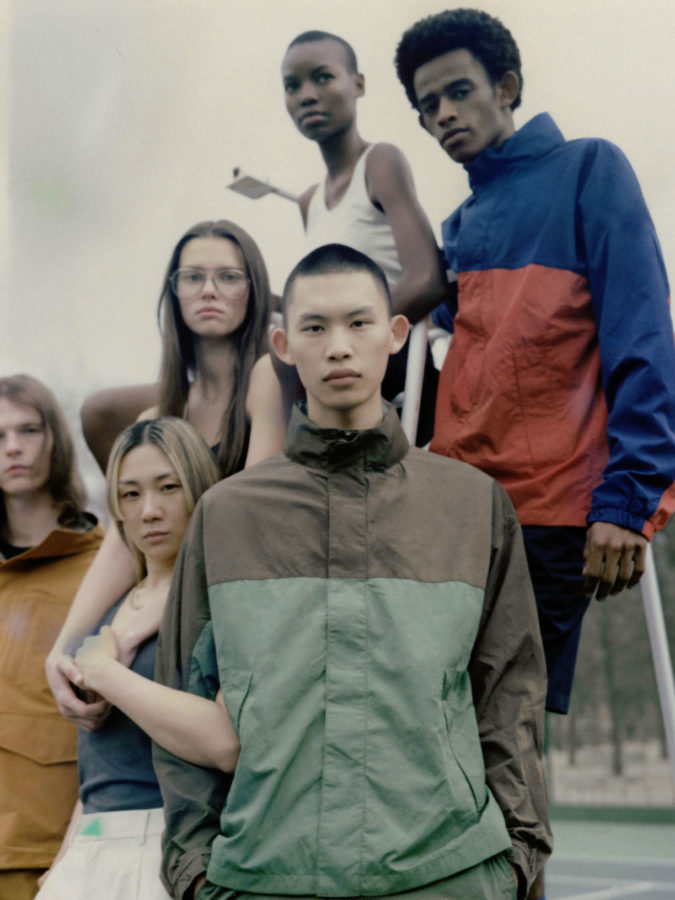





Interview by Armelle Leturcq
Photos by Mathieu Rainaud
Stylist: Armelle Leturcq
Models: Nana Takagi, Lucien Jones, Shubila Stanton, Eloise Cloes, Yura Nakano and Brahim Hassan.
Hair: Massanori Yahiro
Makeup: Anna Sadamori
Casting: Remi Felipe
Stylist Assistants: Roisin Breen






